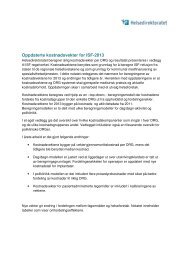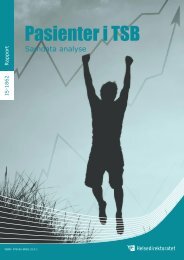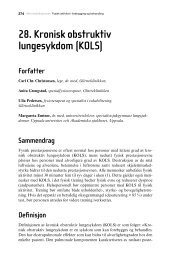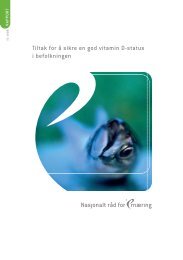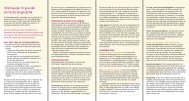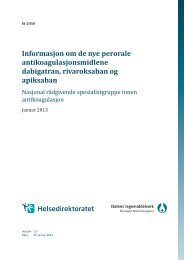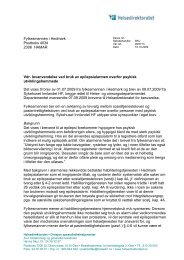Last ned - Helsedirektoratet
Last ned - Helsedirektoratet
Last ned - Helsedirektoratet
You also want an ePaper? Increase the reach of your titles
YUMPU automatically turns print PDFs into web optimized ePapers that Google loves.
the methodological problems that are encountered during the research that underpins<br />
this advisory report. Some effects have not been mentio<strong>ned</strong> in this summary (notably<br />
those that have been insufficiently researched to allow conclusions to be drawn).<br />
Effects of alcohol use prior to conception<br />
There is evidence to suggest that consumption of just one standard drink of an<br />
alcoholic beverage per day or possibly even less prior to conception may reduce<br />
fertility in women. The risk of miscarriage and foetal death is possibly increased not<br />
only by female alcohol consumption prior to conception, but also by male alcohol<br />
consumption in this period. The degree of both effects appears to increase to the degree<br />
that alcohol use increases.<br />
The Committee’s conclusion is that it is not possible to determine a male and female<br />
lower limit for alcohol consumption prior to conception from which it could definitely<br />
be said that there was no effect upon on fertility and pregnancy.<br />
Effects of alcohol use during pregnancy<br />
Alcohol use during pregnancy can have various consequences for embryo, foetus and<br />
pregnancy. The risks and the severity of the effects are directly proportional to the<br />
average alcohol consumption of the individual concer<strong>ned</strong> and the number of glasses<br />
consumed on each occasion. The nature of these effects is partly dependent on the<br />
moment of exposure, but alcohol use appears to produce undesirable effects throughout<br />
pregnancy.<br />
It is possible that average consumption of less than one standard drink per day during<br />
pregnancy may increase the risk of intra-uterine death and premature birth, influence<br />
the spontaneous movements and reactions of the foetus, and have an adverse effect<br />
after birth on the child’s psychomotor development. Furthermore, on the basis of<br />
available in vitro-studies, animal experiments and studies in non-pregnant women the<br />
possibility cannot be ruled out that exposure to even very low amounts of ethanol may<br />
increase the risk of cancer. There is, however, no concrete evidence to suggest that<br />
children who have been exposed to ethanol in the womb have an increased risk of<br />
cancer.<br />
Consumption of between one and two standard drinks leads to an immediate,<br />
temporary interruption of foetal breathing movements in every pregnant woman. These<br />
foetal breathing movements cause amniotic fluid to enter and leave the lungs, which is<br />
important for the development of the lungs. The oxygen for the foetus is, of course,<br />
supplied via the placenta.<br />
Among pregnant women who drink an average of one to two standard drinks per day, it<br />
is likely that there will be an adverse effect on the child’s psychomotor development<br />
and it is possible that the risk of intra-uterine death, premature birth and low birth<br />
weight may be increased.<br />
The evidence for the effects mentio<strong>ned</strong> above is stronger where average consumption is<br />
between two and six standard drinks per day. Furthermore, with this exposure level the<br />
child may possibly have an increased risk of developing alcohol-related problems later<br />
in life.<br />
Where average daily consumption exceeds six standard drinks, there is, in addition to<br />
the effects that have been mentio<strong>ned</strong>, also an increased risk that major malformations<br />
and the specific facial characteristics of foetal alcohol syndrome (FAS) may occur in<br />
the child.<br />
The risk of certain malformations may possibly also be greater in the case of women<br />
104





